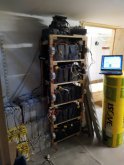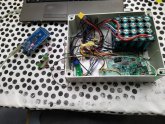You're talking about the hardware layer, the protocol layer is above it, in software, and doesn't really care about the signal type.
In pure theory if you connect the low side to ground and send your signal on the high side the differential input becomes single-ended. Of course doing it that way you've lost the advantages of differential signaling, so using a proper transceiver between your single ended MCU and your differential link is a good idea. But it has nothing to do with the software.
In pure theory if you connect the low side to ground and send your signal on the high side the differential input becomes single-ended. Of course doing it that way you've lost the advantages of differential signaling, so using a proper transceiver between your single ended MCU and your differential link is a good idea. But it has nothing to do with the software.













